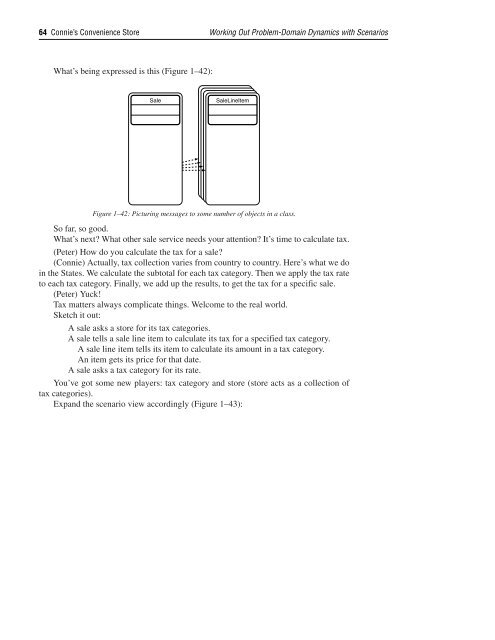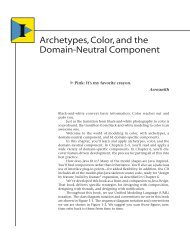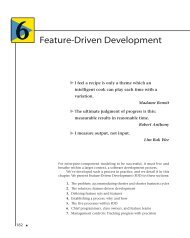Connie's Convenience Store - About Peter Coad
Connie's Convenience Store - About Peter Coad
Connie's Convenience Store - About Peter Coad
You also want an ePaper? Increase the reach of your titles
YUMPU automatically turns print PDFs into web optimized ePapers that Google loves.
64 Connie’s <strong>Convenience</strong> <strong>Store</strong> Working Out Problem-Domain Dynamics with Scenarios<br />
What’s being expressed is this (Figure 1–42):<br />
Sale SaleLineItem<br />
Figure 1–42: Picturing messages to some number of objects in a class.<br />
So far, so good.<br />
What’s next? What other sale service needs your attention? It’s time to calculate tax.<br />
(<strong>Peter</strong>) How do you calculate the tax for a sale?<br />
(Connie) Actually, tax collection varies from country to country. Here’s what we do<br />
in the States. We calculate the subtotal for each tax category. Then we apply the tax rate<br />
to each tax category. Finally, we add up the results, to get the tax for a specific sale.<br />
(<strong>Peter</strong>) Yuck!<br />
Tax matters always complicate things. Welcome to the real world.<br />
Sketch it out:<br />
A sale asks a store for its tax categories.<br />
A sale tells a sale line item to calculate its tax for a specified tax category.<br />
A sale line item tells its item to calculate its amount in a tax category.<br />
An item gets its price for that date.<br />
A sale asks a tax category for its rate.<br />
You’ve got some new players: tax category and store (store acts as a collection of<br />
tax categories).<br />
Expand the scenario view accordingly (Figure 1–43):




